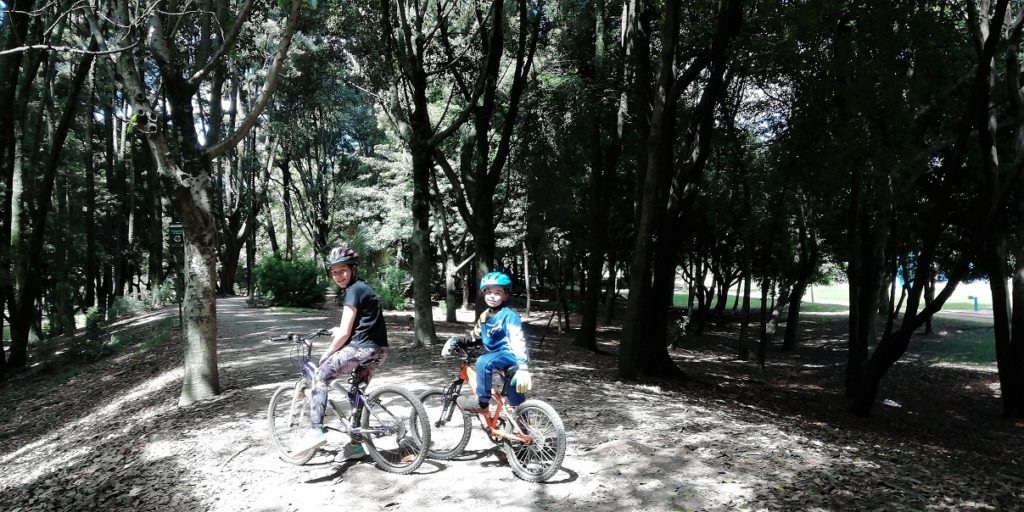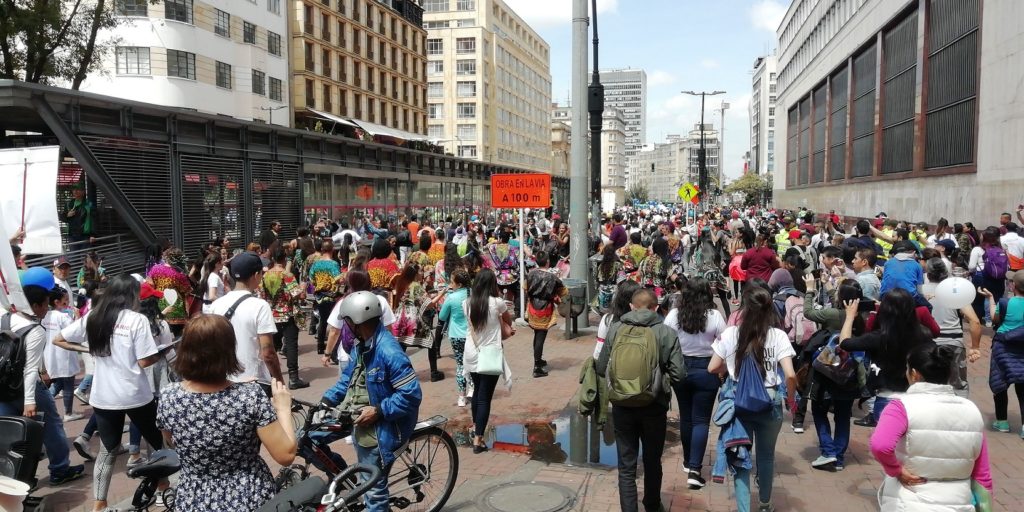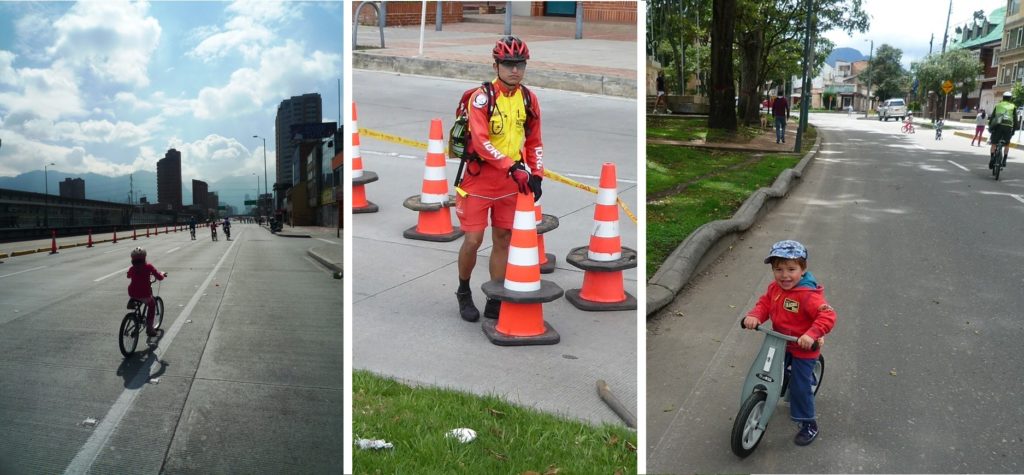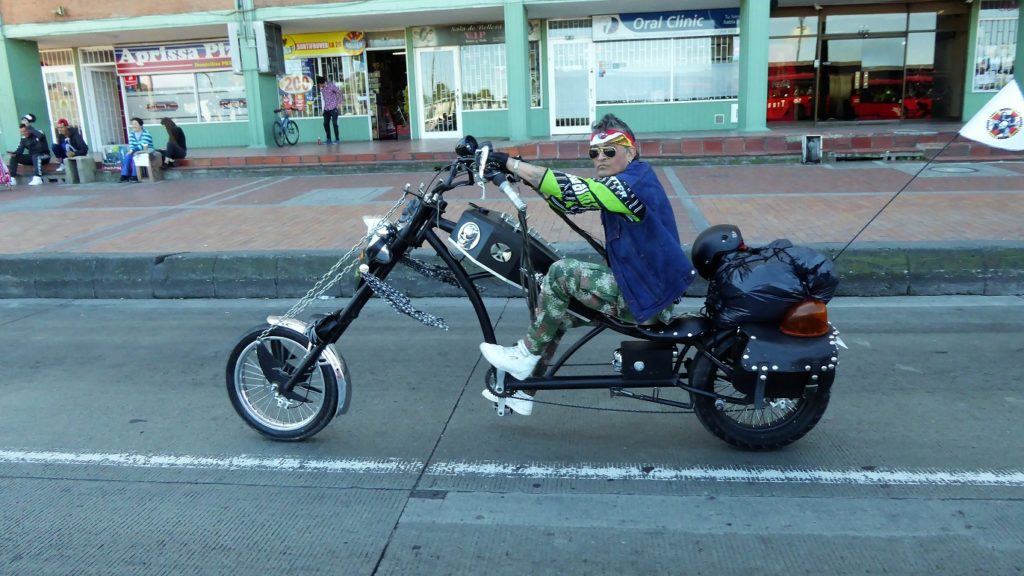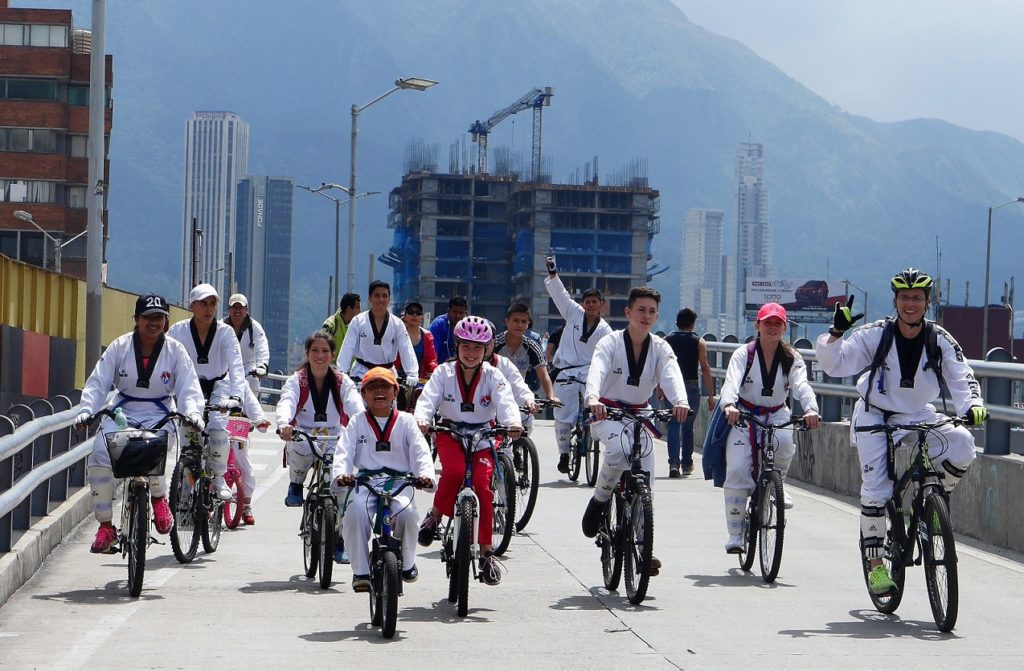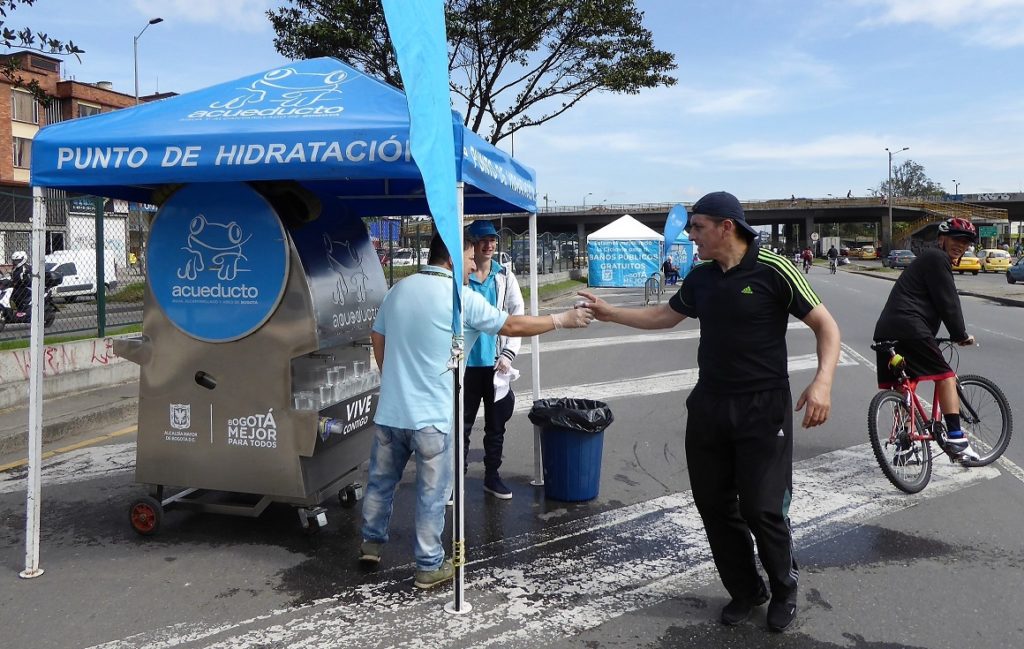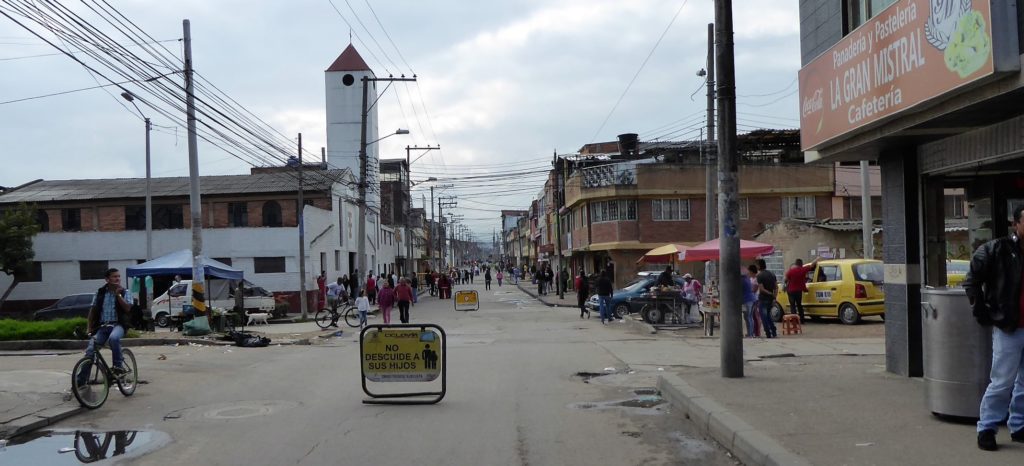Bogotá’s super Ciclovia

Posted in February, 2019.

One of the biggest and best thing to do in Bogota is ride the Ciclovia, the 120 kilometres of city roads closed to traffic on Sundays and (most) bank holidays from 7am to 2pm so everyone can get exercise, fresh air, and a cheap day out on their bikes.
Well, not just bikes. Among the estimated 2 million people enjoying this freedom each week are runners, joggers, skateboarders, roller-skaters and pet-walkers. I even once saw a guy strolling down Parkway with a duck on a leash.
See my related post Bike Tribes of Bogotá
Ciclovia versus Cicloruta: point of clarity, in Bogotá there are fixed permanent bike paths called Ciclorutas, see lower down the post for info. The Ciclovia is the closure of main road for a limited to time on Sundays and Bank Holidays (festivos) for use of bikes and other non-motorised transport.
Perhaps the most special thing about the Ciclovia is it is one of the few activities that brings people together in a highly unequal city. The routes pass through very rich and extremely poor barrios, and everyone mixes up and shares a common space, added to the rush briefly invading the city’s concrete hyper-ways normally pounded by heavy vehicles.
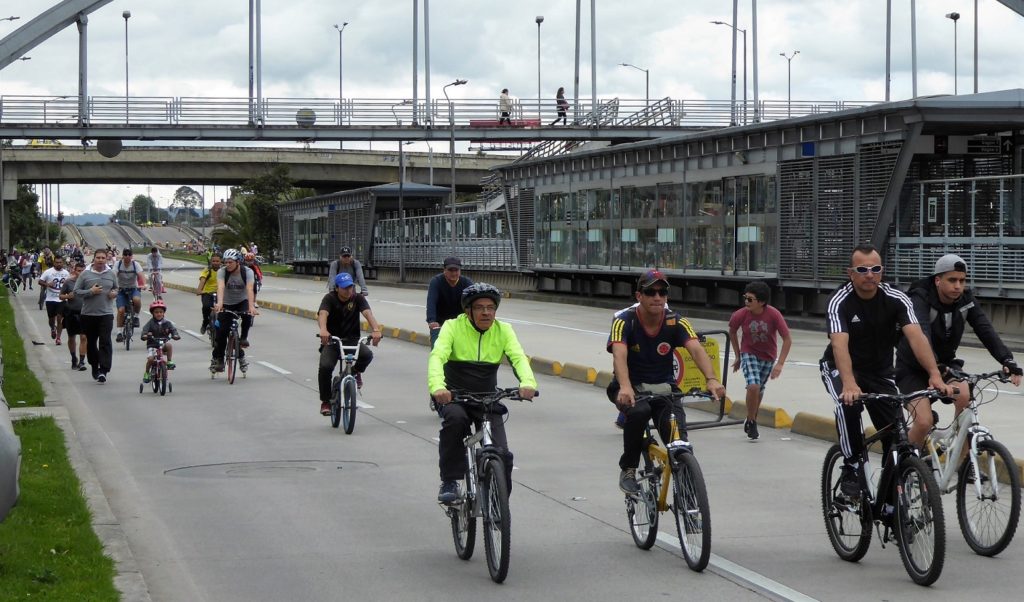
So if you are visitor to Bogota there is no better way experience it than hire a bike,ask at your hostel or hotel. or you can do an organised tour, such as with
– Bike Tours and Rentals Bogotá
– Bogo Tours
– Bogotá Bike Tours.
As you can see, business is booming. If you are living in the city then buy your own bike, but not a new one: there are plenty of good second-hand bikes in the compraventas (pawn shops) along Avenida Caracas, find one you like for under US$100,000 then take it to the nearest bicicleteria for a full overhaul (can cost around $40,000) and buy a helmet, good chain and padlock. Now you are set.
The Ciclovia covers very many parts of the city, and passes through some poorer barrios in the south. I’ve never had any problems, but I would recommend NOT TO TAKE very expensive bike or personal items (cameras etc) in these areas. Always bring a rain jacket and sun cream. This is Bogotá.
There are plenty of snack stalls, bike repair posts and some information kiosks, but not many official toilets on the routes. Some cafes and restaurants along the route offer their toilets for a small fee.
The Ciclovia uses several lanes of some of Bogota´s largest roads and transects the city north-south and east-west, so wherever you are, you will not be far from one of the routes which mostly interconnect. The Ciclovia takes the Septima through the downtown area – and the Plaza Simon Bolivar – which gets very clogged with street vendors, street performers etc. You will not cycle much more than walking pace at peak times (10am to 1pm). The Ciclovia also connects to the Parque Simon Bolivar, (at least 8 kms from the Plaza of the same name) which has some fun mountain bike tracks. See the map below, or here for updates…
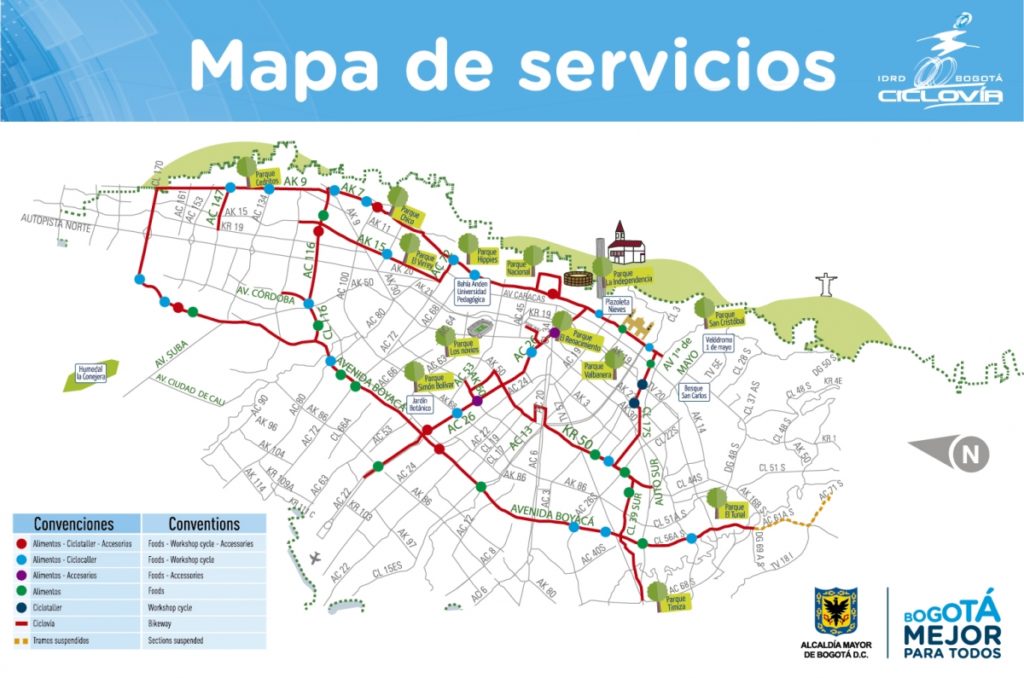
SECURITY ISSUES CYCLING IN BOGOTÁ
The biggest risk of cycling in Bogotá is being hit by a vehicle. But there are also security risks: In recent years as more people take to bikes many people have been attacked and some even murdered for their bicycles. This happens even in broad daylight. The Ciclovia is generally safe, as many people use it and there is police presence. Less secure are the cycle routes (ciclorutas, see below) where organised gangs target riders of high-value bikes. To avoid this best to ride an old or cheap bike, or one bought second hand and keep it looking a bit muddy and oily. Many bike shops can make up a bike from old parts. (Do not buy a high-end second-hand as this has probably been stolen). You can register your bike with the city council.
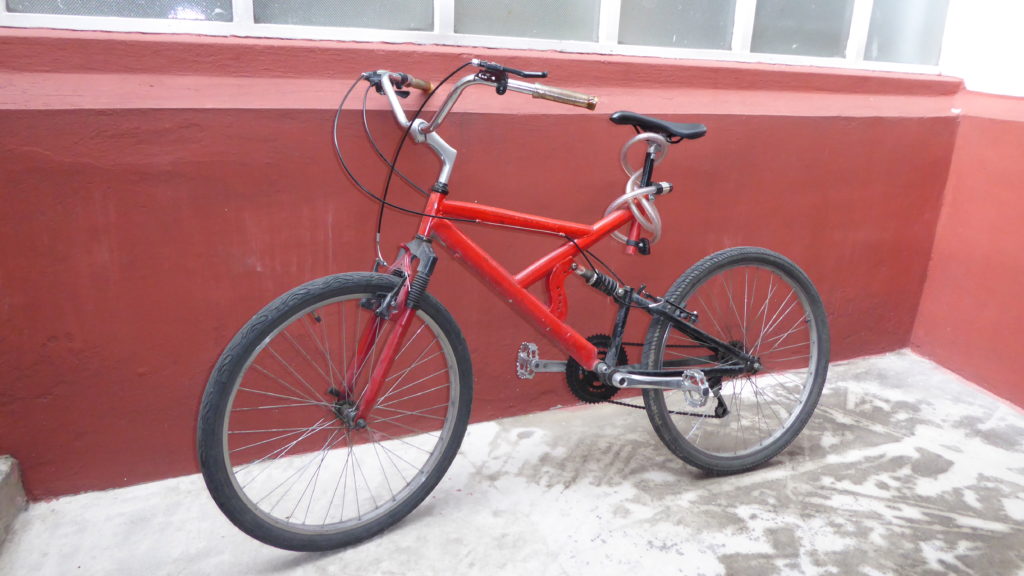
And now ….the CICLORUTA
There are at least 300 kms of permanent cycle paths – Cicloruta – in Bogotá, which the mayor once said in a TED talk were ‘safe enough for children’. He lied. They aren’t. Although a big plus for the city, and constantly increasing and being improved, the fact remain that many Ciclorutas mix cars and bikes in dangerous situations, especially at crossings, or mix bikes and pedestrians and street vendors in a crazy obstacle course. Sure, some routes – like the one along Av Eldorado – are custom built. Others are tacked on to the sides of busy roads. It takes skill, patience and defence riding to safely pass through the city. And wear a helmet.
Remember too that a police chief recently admitted that ‘no-one in the history of Colombia has ever failed their car driving test’. Most car drivers ‘buy’ their licences in corrupt transport system. Few drivers are trained to use their mirrors, indicator signals, or to consider other users. On the plus side, Colombian drivers are generally fairly relaxed and forgiving of other road users (they need to be!), sure they drive fast and fill gaps but are not vindictive like in parts of the world.
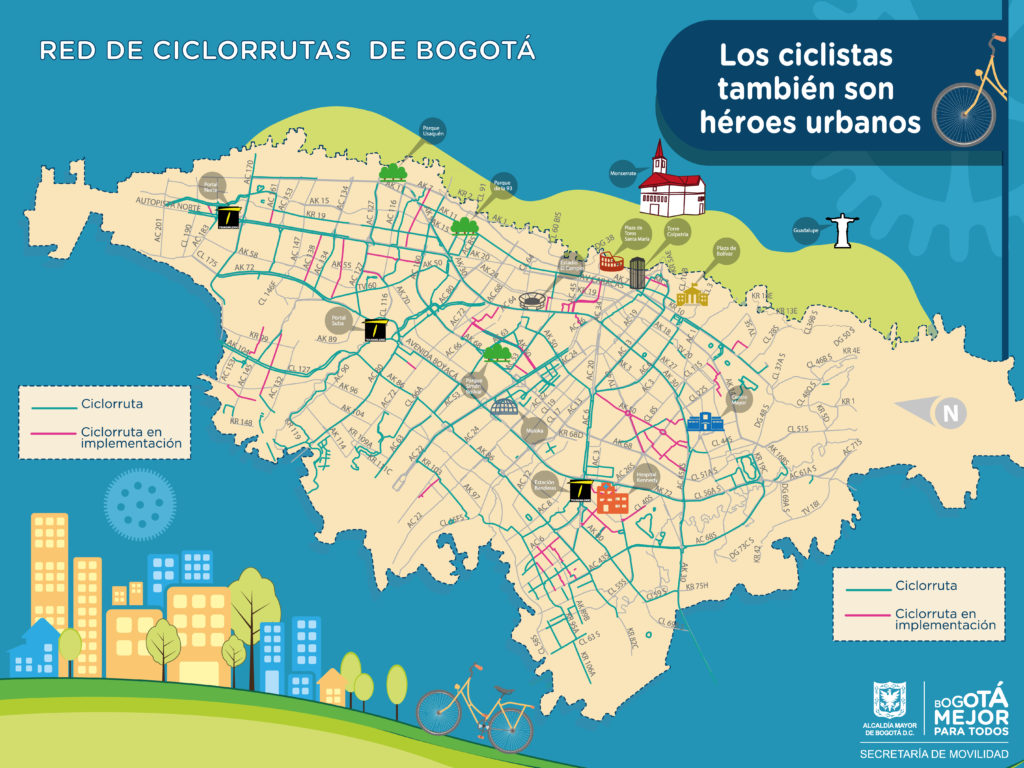
OK, here’s some more info and photos:
